

Key topic: Climate-neutral air travel – Is it possible?

Interview Making massive investments
Emanuel Fleuti, Head of Sustainability and Environment at Flughafen Zürich AG, on sustainable air transportation.
Page 14
Infographic Producing sustainable aviation fuel
A diagram shows the individual steps in the production of sustainable kerosene and how they could be combined to form a fully functional structure.
Page 14

Background
A complex promise
There’s more to climate-neutral aviation than just reducing emissions during flights. A PSI study analyses what is needed to achieve this long-term goal.
Page 8



The future of flying
People want to be mobile. Ever since the dawn of time, we have been seeking new ways of getting from place to place – farther, faster, and more efficiently. More than 100 years ago, this desire led us to take to the skies. Today, aviation is the backbone of global mobility and thus also of the economy. But this progress comes at a price: Emissions from aviation contribute significantly to climate change.
One promising solution to this problem is sustainable aviation fuel (SAF). Made from renewable sources such as biomass or through chemical processes that capture carbon from the atmosphere, SAF takes a lot of energy to produce. Unlike conventional kerosene, which is obtained from fossil fuels and releases large amounts of additional carbon dioxide (CO₂) during combustion, SAF could significantly reduce the CO₂ footprint of aviation. This makes SAF production a key technology on the way to climate-friendly aviation.
At present, SAF production is still very cost-intensive. The conversion of biomass or organic waste into liquid fuels requires complex chemical processes that are both technologically challenging and energy-intensive. These processes must be further optimised and scaled up to make mass production possible.
The technical challenges can certainly be solved, and at PSI we are working hard to overcome them. To do this we are drawing on the expertise of our researchers in collaboration with industry partners. The aim is to make the manufacturing process more efficient and, at the same time, to make production more cost-effective.
A major advantage of SAF is that it would be relatively easy to integrate such fuels into the existing system. Nevertheless, the transition to becoming climate neutral also requires enormous efforts on the part of enterprises such as airports. One example is Zurich Airport, on whose visitors’ terrace I am standing, because there’s a lot more to aviation than the technology that powers aircraft. PSI researchers have also been looking into these other areas of aviation and have developed calculations and models that show where there is potential for improvement.
The bottom line of our research to date is encouraging: The future of flying can be sustainable. In this issue, you can learn more about the path to this ambitious goal.
Christian Rüegg, PSI Director
Climate-neutral air travel –
Is it possible?
If Switzerland is to keep its promise to become climate-neutral by 2050, aviation will also have a part to play. An important building block in this endeavour is sustainable aviation fuel. However, that alone will not be enough because air traffic involves many more climate-relevant factors than just the kerosene burned during a flight.
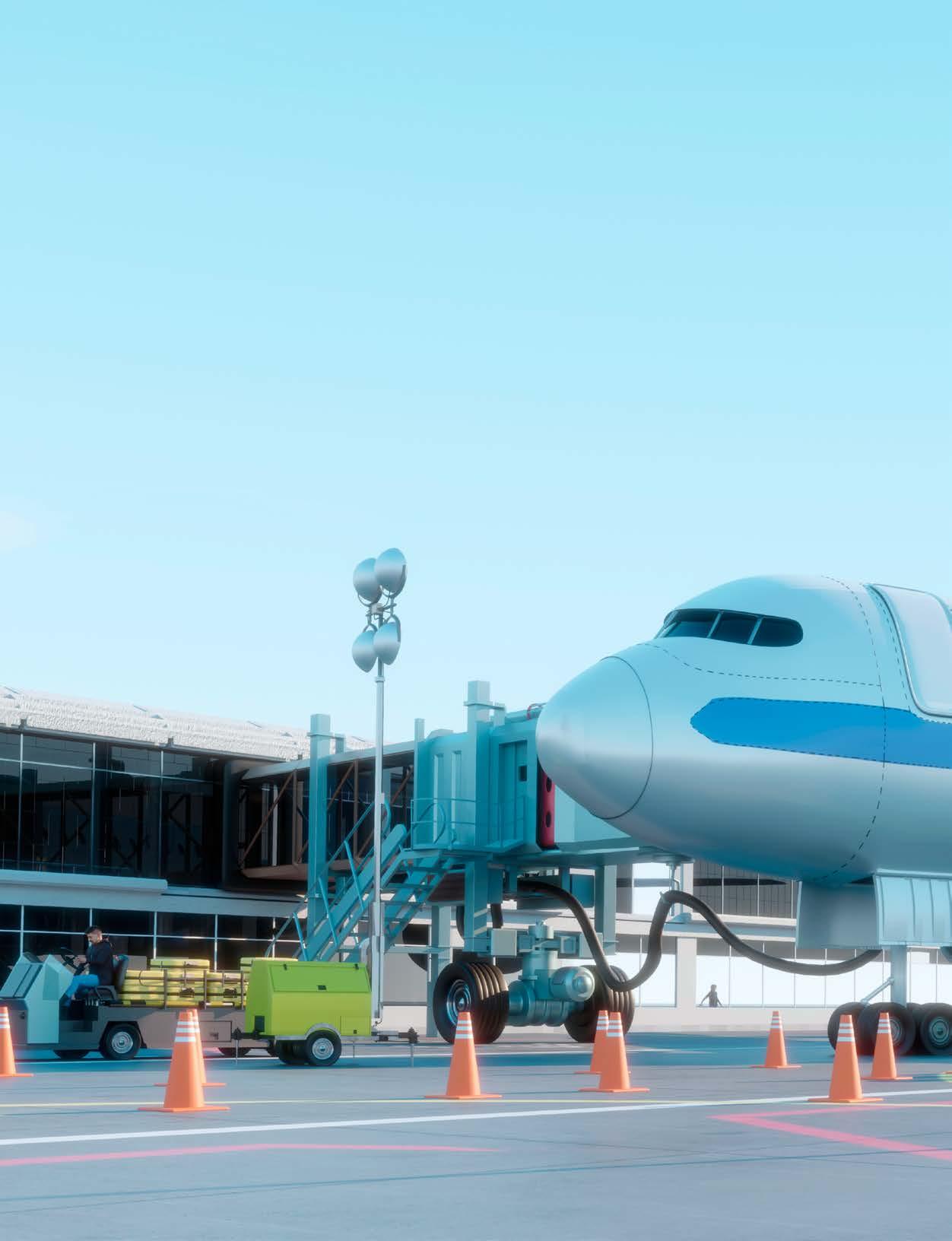
Background A complex promise Page 8 1

A complex promise
There’s more to climate-neutral aviation than just reducing emissions during flights. A PSI study analyses what is needed to achieve this long-term goal.
Text: Jan Berndorff
In 1903, when the Wright brothers made their first test flights with a manoeuvrable engine-powered aircraft on a beach near the small town of Kitty Hawk, North Carolina, it was not yet possible to predict how aviation would develop in the following 120 years. Today flying is commonplace, a comprehensive network of flight paths spans the earth, and nearly every region on our globe – whether near or far – can be reached by plane in one or two days at most. It’s an offer that meets the needs of many people. While IATA, the international umbrella organisation of airlines, estimated passenger numbers at 4.35 billion in 2023, this figure is expected to more than double by 2050, topping 10 billion passengers per year.
Obviously, this will have consequences. The effects on the climate are particularly critical, because in terms of passenger kilometres, air travel places a far greater burden on our climate than other means of transportation. The first thing that comes to mind might be the carbon dioxide (CO₂) emitted by aircraft engines. Yet, as is so often the case, the situation is in fact more complex.
It begins with the booking. Already here, climaterelated considerations can play a role. According to the International Energy Agency (IEA), air transportation accounts for more than three percent of all global CO₂ emissions, and its overall contribution to the greenhouse effect is even greater – not least because the atmosphere reacts much more sensitively at the higher altitudes, where aeroplanes fly, than on the ground. A passenger flying economy class roundtrip between Zurich and New York, for example, is responsible for the emission of around three tonnes of carbon dioxide. The amount is roughly double for business-class flights and three times as high in firstclass, because of extra space required. Three tonnes is already one-fourth of the average emissions otherwise caused by a Swiss person throughout a whole
year. Citizens of our country are particularly frequent flyers: on average, 1.6 flights per person per year. That is two to three times more than people living in neighbouring Germany, Austria, France, and Italy.
Many airlines therefore offer “green” booking options. For example, on a flight to New York, the CO₂ emissions caused can be offset by paying an additional 90 Swiss francs on top of the 800-franc ticket. Some airlines promise that 80 percent of the extra fee will be invested in climate protection projects, and 20 percent go towards purchasing so-called sustainable aviation fuel (SAF). This is sustainable kerosene that is produced without petroleum.
Does that take care of everything? Could air travel be made climate-neutral by compensatory payments on this scale?
“Unfortunately not,” says Thomas J. Schmidt, head of the PSI Center for Energy and Environmental Sciences. In the past year, a study of PSI and ETH Zurich made it clear that climate-neutral aviation is indeed possible – but funding climate protection and SAFs calls for far more than such affordable surcharges. “And it’s not just about higher prices,” Schmidt says.
High ambitions
The aviation industry has set itself the goal of reducing its CO₂ emissions to net zero by 2050 and achieving climate neutrality. In doing so, it is pursuing the same goal that the EU decided on in 2021 and which Switzerland decided by referendum in 2023. The aim is to become climate-neutral overall by 2050, in order to effectively counteract global warming. The big question is whether and how this can be done. Especially in aviation, since aircraft require enormous amounts of energy to take to the air, as well as complex infrastructure and logistics on the ground.
3 % of global carbon dioxide emissions 1

10 000 commercial aircraft in the air at any one time 3
37.7 million flights per year 2
Exactly this question has been investigated by Romain Sacchi and Christian Bauer of the Energy Systems Analysis Lab at PSI, together with Viola Becattini and Marco Mazzotti of the Institute for Process Technology at ETH Zurich. They collected data and forecasts on all the different aspects and calculated various scenarios for developments up to 2050.
“One important question in this is what, exactly, is actually meant by net-zero CO₂ or climate neutrality,” says Romain Sacchi, principal author of the study alongside Viola Becattini. Many calculations only consider CO₂ emissions due to the actual flight. “But that is too limited,” adds Becattini. If air travel continues to grow as it has until now, the calculations indicate that CO₂ emissions due to air travel will actually account for only around 20 percent of the total climate impact by 2050. If we want to make flight operations as a whole climate-neutral, we must take into account not just flying itself, but also fuel production and the overall aviation infrastructure –but above all, other aircraft-related emissions that have an impact on the climate.
Aviation places a significant environmental burden on the climate. It’s not just carbon dioxide emissions from burning kerosene that weigh it down. Many other effects have an impact. In addition to processes in the atmosphere, human behaviour also plays a role as air traffic continues to grow.
Sources:
1 International Energy Agency (IEA), data for 2019
2 Statista
3 Flight Aware
There’s more to a travelling by air than flying. Just as a car journey requires roads, petrol stations, and parking lots, an aircraft also requires a certain infrastructure – along with complex logistics to provide for the aircraft, crews, and passengers and to enable everyone to take off as punctually as possible. Kerosene, luggage, and catering require transportation; aircraft need to be maintained; terminals, hangars, and other operational buildings have to be cleaned, heated, and illuminated. All this causes additional greenhouse gas emissions.
According to its own data, Zurich Airport, Switzerland’s largest, handled nearly 250,000 flights in 2023, carrying 380,000 tonnes of freight and 29 million passengers. Twenty-seven thousand people work at the site. Its total energy consumption is equivalent to that of a medium-sized city. This has less of an impact on the CO₂ balance in Switzerland, where electricity is generated mainly by hydropower and nuclear plants and less than two percent comes from fossil
The other half of the truth
A multitude of climate effects
It is not only the CO₂ emissions from aircraft that are driving global warming. Another aircraft emission that impacts the climate is nitrogen oxide. It promotes the formation of ozone, which is a very potent greenhouse gas at this altitude. The greatest effect, however, is caused by soot and other particulates: these promote the formation of cirrus clouds, which heat up the climate considerably. However, greenhouse gases are also produced during the construction and operation of airports, the production and transport of fuel, and by passengers travelling to and from the airport.
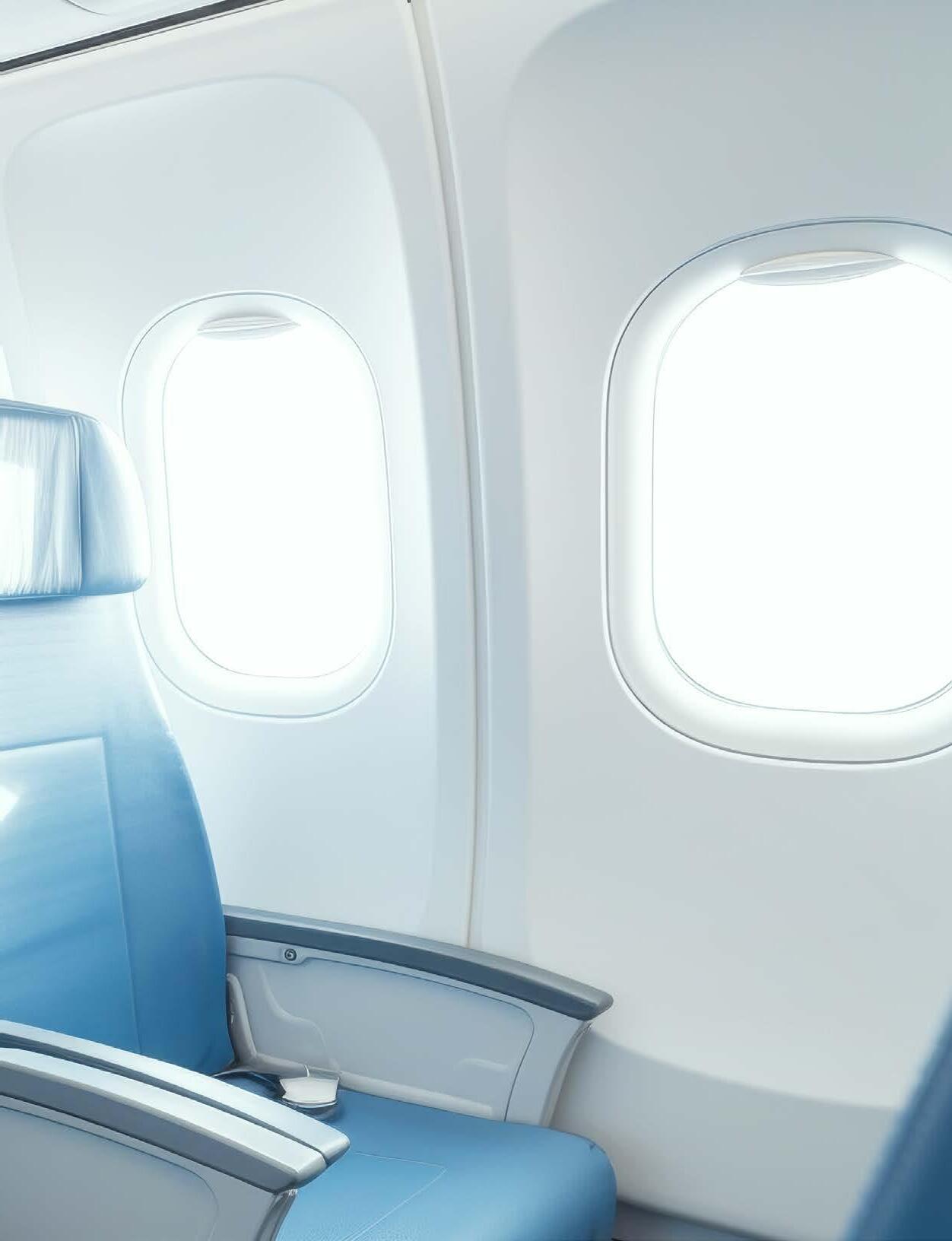
Travelling to and from airport

Operation of airports / infrastructure
Construction of airports / infrastructure
NOx
Aircraft construction
Contrails / cirrus clouds
Direct CO₂ emissions
Fuel production
Nitrogen oxide / ozone
fuels, than it would in other countries. Nevertheless, electricity production also releases CO₂. In addition, the emissions released during the construction of the entire facility, including the aircraft, must of course be taken into account in the climate balance.
The study by PSI and ETH Zurich does show that the climate impact of the aviation infrastructure needs to be taken into account. Overall, however, it is relatively small, especially over the period until 2050 and beyond. The climate impact of flying itself and the emissions from fuel production are much greater. This is illustrated by the CO₂ balance of Zurich Airport for 2021: the emissions from airport operations were around 30,000 tonnes, while those associated with flights and delivery traffic amounted to 1.6 million tonnes.
The so-called non-CO₂ effects of flying are even more relevant for the climate – as the study showed more clearly than ever before. These effects include soot and other particles released when kerosene is burned; such particles serve as condensation nuclei for clouds. They also include nitrogen oxides that promote the formation of ozone in the air, which in the troposphere acts as a greenhouse gas, as well as water vapour and the resulting condensation trails that can promote the formation of cirrus clouds in the upper atmosphere at an altitude of around ten kilometres.
These wispy clouds made up of ice crystals do not have a cooling effect on the earth’s surface like the lower stratus and cumulus clouds, which reflect incoming sunlight. “Instead, they are quite transparent to sunlight,” says Benjamin Tobias Brem, whose research at the Laboratory for Atmospheric Chemistry of the PSI Center for Energy and Environmental Sciences focuses on the environmental consequences of aviation emissions. “In contrast, the ice crystals reflect the infrared radiation from the earth’s surface back to earth very effectively, thereby causing additional warming.” This warming effect depends on the geographic latitude and height of the clouds. At our latitudes, the warming effect occurs at an altitude of around six kilometres – right where the traffic of big planes on long-haul flights, which are responsible for the majority of aircraft emissions worldwide, is concentrated.
“Altogether, these non-CO₂ factors account for more than half of the climate impact of aviation,” says Christian Bauer. “Up to now, though, they have been ignored in many analyses and net-zero promises. Or not correctly factored in.”
Previous calculations have been imprecise
It is customary to convert such emissions and effects into CO₂ equivalents so as to include them in the
overall balance. “But the methods and values used to date have proven to be inaccurate,” says Marco Mazzotti. “We therefore proceeded with greater precision.” The methods used by the researchers take into account one essential difference between the various factors: non-CO₂ effects are much more short-lived than CO₂. In fact, they are known as shortlived climate forcers, or SLCFs.
While around half of the carbon dioxide emitted is absorbed by forests and oceans, the other half remains in the atmosphere for thousands of years, spreading out and behaving as a greenhouse gas. In contrast to this, ozone, for example, is many times more potent than CO₂ as a greenhouse gas, but it breaks down within a few months. Contrails and the resulting clouds vanish in just a few hours. “The problem is that the increasing air traffic means we are constantly producing more SLCFs, so that instead of rapidly disappearing they accumulate. As a result, they exert their enormous greenhouse potential over longer periods of time,” says Viola Becattini. It’s like a bathtub with both the tap and the drain open: as long as the tap lets in more water than the drain lets out, the tub keeps getting fuller – until eventually it overflows.
In the researchers’ scenarios, they considered ways of closing the tap, at least enough so that it only lets in as much as can leave through the drain. Aviation should not emit more CO₂ equivalents overall than will be removed from the atmosphere elsewhere. Only then can flying actually be climate-neutral. This

“The worldwide capacity for carbon capture and storage is not large enough to offset remaining emissions.”
Christian Bauer, PSI Energy
Analysis Lab

“The number of flights will probably only drop noticeably if they become really expensive.”
Thomas J. Schmidt, PSI Center for Energy and Environmental
explicitly includes capturing CO₂ from the air and compressing it for climate-safe storage in the ground, much as oil was stored in the ground before we began extracting it. Such carbon capture and storage (CCS) techniques are already in use and are considered an option particularly where a limited CO₂ emissions cannot be avoided. However, the long-term effectiveness and safety of CCS have yet to be proven.
The engine is the most obvious lever for reducing the climate impact of air transport. Researchers around the globe are working on electric or hydrogenpowered aircraft. Such engines would be climateneutral provided the electricity for charging the batteries or producing the hydrogen is obtained from hydroelectric, wind, or solar power. However, this also requires all upstream production processes – such as the manufacture of batteries – to be carried out using renewable energy.
But even if that were the case, there would still be insurmountable technical hurdles. Batteries currently have an energy density of 250 watt-hours per kilogram. Kerosene delivers 12,000 – almost 50 times higher. A large plane on a long-haul flight, such as a trip to New York, would have to carry so many fully charged batteries that it would be too heavy to take off. Even advances in battery technology are not expected to yield sufficient improvements in the foreseeable future. For the time being, battery-electric power can only be used by small aircraft flying shorthaul routes. These, however, account for less than two percent of greenhouse gas emissions in aviation.
The outlook for hydrogen is similar. Even in its super-cooled, compact, liquid form, hydrogen takes up four times as much volume as kerosene per watthour delivered. Planes would not have to carry more weight, but they would have to provide more volume for the fuel, and volume too is a critical factor in aircraft design. Intensive research is being conducted into the optimum design for aircraft and the supply chain for hydrogen. But that’s the catch: redesigning the aircraft and the infrastructure requires an immense effort – and takes time. Some manufacturers such as Airbus have announced that they will not put the first hydrogen aircraft into service until 2035 at the earliest.
Even these will not be very large (up to around 90 seats) and will be suitable for intra-continental flights rather than long-haul flights. They are aiming for a range of around 2,000 kilometres. That won’t get you to New York. And the fact remains that it is large aircraft on long-haul flights of more than 4,000 kilometres that account for the bulk of greenhouse gas emissions in aviation.
The hope, therefore, is the previously mentioned SAF, sustainable aviation fuel (see infografic page 14).
Air tickets at triple the cost
Widespread use of SAF could certainly bring us much closer to climate-neutral aviation by 2050, but it is more costly in terms of resources and money, especially because producing hydrogen by electrolysis is very energy-intensive.
Which brings us back to carbon offsetting. The PSI and ETH researchers have also costed this out. “A surcharge of a few euros would be pure window-dressing,” says Christian Bauer. “To comprehensively balance out the actual climate impact of travelling by air, a ticket would have to cost around three times as much.” That flight to New York, then, wouldn’t have cost us 890 Swiss francs instead of 800, but closer to 2,400.
“A further advantage of such a sharp price increase would also be that it would certainly reduce demand for flights significantly,” says Viola Becattini. This brings us to the most important message of their study: as promising as the use of SAF, the development of alternative engines, and potential efficiency gains in production, logistics, and transport may be, none of these will get us all the way to our goal, according to the calculated scenarios. At least not by 2050. Because to do so, we would have to offset large amounts of remaining emissions using CCS, that is, capture them from the air and store them in the ground. “The worldwide capacity of this technology is not sufficient to do this,” says Bauer. Especially since
Climate-neutral air travel – Is it possible?

Wish and reality
The aviation industry’s projections for flight volumes differ considerably from what we can afford from a climate perspective. Even if we were to convert all aircraft to green engines, the numbers would still have to drop in order to achieve climate neutrality by 2050.
Projected trend in passenger numbers
Necessary trend in passenger numbers
Source: IATA
CCS facilities are not reserved for aviation alone and have not yet been tested on a large scale.
The bottom line: Ultimately, we need to travel by air less rather than more – there is no other way. Sacchi and Becattini have also calculated how much less. In combination with increased efficiency and CCS within the scope of what is feasible, air traffic would have to decrease by 0.2 percent every year, bringing it to around 95 percent of today’s volume by
2050. Were we to stick to fossil kerosene, we would have to cut back four times as much – to 80 percent.
“How we regulate the number of flights to the extent needed is a question that society and politics must answer,” says Thomas J. Schmidt. “Changes in our behaviour are certainly needed. But such changes are not easy to impose. The number of flights will probably only drop noticeably if they become really expensive.”
2023
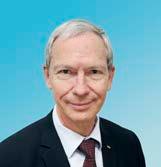
Making massive investments
Emanuel Fleuti is Head of Sustainability and Environment at Flughafen Zurich AG, which owns and operates Zurich Airport.
Mr Fleuti, aviation is supposed to become climate-neutral by 2050. How can your airport lead the way?
Emanuel Fleuti: We are making massive investments in decarbonisation, for example by electrifying our vehicle fleet, but above all we are making the energy supply for our large array of buildings more and more efficient while relying on renewable energy sources. We aim to at least double the number of our 12 solar power facilities by 2040. We are renovating existing buildings to improve their energy efficiency. New buildings are being fitted with state-of-the art technologies, such as energy piles and geothermal probes, which harness the geothermal heat in the ground. We are currently working with experts to determine if the Ice Age geological channel that runs beneath our airport could be used to store heat and cold. This would be a major step towards emission-free heating and cooling at Zurich Airport, already by 2040.
How would it work?
This natural channel is about 300 metres deep, up to one kilometre wide and about 30 kilometres long. It’s filled with water-bearing gravel. During the summer, we could store our surplus energy in the water as heat and then use this heat in winter. And vice versa. We are in the process of building a test well.
In your view, what role can SAF play in achieving climate neutrality? SAF is considered a royal road to climate neutrality in air transportation. Back in 2020, we entered into a cooperation with the high-tech company Synhelion SA. Also in 2020, we were the first to refuel an aircraft with SAF in Switzerland. As an airport, however, we only act as an intermediary between the fuel manufacturers and the airlines.
A PSI study has found that achieving climate neutrality will also require a five-percent reduction in flights overall. What would that mean for your airport?
I’m not familiar with the study. As an airport, we do not have a specific growth target. Our development depends on the population and economic growth of Switzerland. But given the demand for air travel, it would seem difficult to reduce the numbers. There is often no alternative means of travelling, especially when it comes to long-haul flights. We mustn’t forget that in an interconnected world, flying is the only realistic option for many people to see friends, relatives, and family.
How could you deal with a drop in passenger numbers?
As an airport, we have a federal mandate to ensure that Switzerland is connected to the world’s major cities. If society decides to fly less, we will adapt.
Production chain: How SAF could be manufactured in the future
CO2 from the atmosphere
Special turbines can filter CO₂ from the air. Alternatively, it can also be separated from waste gases at biogas or sewage treatment plants.
Water electrolysis
Electrolysers use electricity and a special membrane to split water into oxygen and hydrogen.
2H₂O → O₂ + 2H₂
Renewable energy sources
A fundamental requirement is that the electricity needed by the system should be generated by environmentally friendly means: using hydroelectric, wind or solar power. This is particularly important for powering the very energy-intensive electrolysers.
Methanol synthesis
A refinery-like plant produces methanol from carbon dioxide and hydrogen with the help of catalysts.
CO₂ + 3H₂ → CH 3OH + H₂O
At the airport
The kerosene substitute is delivered to the airport using conventional transport logistics. Planes can refuel with it just like normal kerosene.
SAF
Methanol, in turn, can be used to synthesise the right mixture of hydrocarbons very efficiently in a newly developed multi-stage process, with the help of a catalyst. This synthetic aviation fuel can serve as a one-to-one substitute for kerosene.
Taking off with sustainable kerosene
Researchers around the world are working to find and optimise new ways of producing climate-neutral aviation fuel. At PSI, together with industry, they’re exploring a promising approach.
Text: Jan Berndorff
One of the big hopes of the air transport industry as it pursues its proclaimed goal of achieving climate neutrality by 2050, is sustainable aviation fuel, SAF for short. The kerosene currently used consists of a mix of certain hydrocarbons derived from crude oil. During combustion in jet turbines, carbon dioxide (CO₂) is released along with the energy. Its concentration in the atmosphere increases, and the climate heats up.
SAF is made up of the same hydrocarbons and could, unlike electric power and hydrogen, immediately replace fossil fuel-based kerosene. “SAF can be directly integrated into the existing airport infrastructure and, with a few adaptations, used in conventional engines,” explains Marco Ranocchiari, a PSI chemist and head of the Energy System Integration (ESI) Platform. ESI is a test facility for environmentally friendly energy sources of the future.
The advantage of SAF for the climate is that the hydrocarbons are not extracted from the earth in the form of crude oil and thus do not place an additional burden on the atmosphere. Instead, biological material from the surface serves as the source – to date, this has mainly been vegetable and animal cooking oils and fats. The carbon they contain comes from the atmosphere, so the CO₂ concentration remains the same. The aircraft’s propulsion is climate-neutral – provided SAF production and transportation are done exclusively with renewable energy instead of fossil fuels. This is not currently the case, which is why SAF cannot yet cut the CO₂ emissions of a flight to zero, though it can at least reduce them by around 80 percent.
However, producing the required quantities of SAF at an affordable cost is a major challenge. Around 600 million litres of SAF were produced worldwide in 2023, a tiny fraction of the approximately 325 billion litres required. The International Air Transport Association (IATA) estimates that 450 billion litres will be needed in 2050 to fully replace fossil kerosene.
PSI researchers, together with a number of different partners, are investigating, developing, and optimising several options for producing kerosene without petroleum. For example, in the three-year SynFuel Initiative, together with the Swiss Federal
Laboratories for Materials Science and Technology Empa and with financial support from the ETH Board. Or with the climate start-up Metafuels.
The available biomass is not enough
One option is based on biomass. SAF made from cooking oils and fats is already in use, and to date this is the only certified product. In a process known as hydrolysis, oils are turned into fatty acids. Further processing then transforms these into a product that resembles crude oil. Finally, this is refined with hydrogen to become bio-kerosene. At present, this first-generation SAF can be blended up to 50 percent with conventional kerosene.
But humanity cannot consume enough fried food to generate sufficient amounts of used cooking oil to produce the quantity of SAF that is needed. So researchers are exploring other ways to convert biomass into kerosene. Sawdust and other plant waste from gardening, agriculture, and forestry are suitable, as is sewage sludge. Using various hydrothermal processes – involving heat, pressure, and water – the researchers can convert these materials into the desired hydrocarbons, which are then refined with hydrogen to make kerosene.
Yet even that will not be sufficient, so the researchers are looking at other options to replace fossil kerosene. One variant of SAF could be produced artificially using renewable electricity (power-to-liquid) or directly using the power of the sun (sun-to-liquid) from the simple precursors hydrogen and carbon dioxide. This second generation of SAF is also known as e-kerosene. Considerably greater quantities could be produced this way than from used cooking oils (see infographic on page 14).
Artificial fuels are especially friendly to the environment
One method of producing fuels from hydrocarbonrich solids and gases has been known for a long time: It is called Fischer-Tropsch synthesis, named after the German chemists Franz Fischer and Hans Tropsch,
the necessary
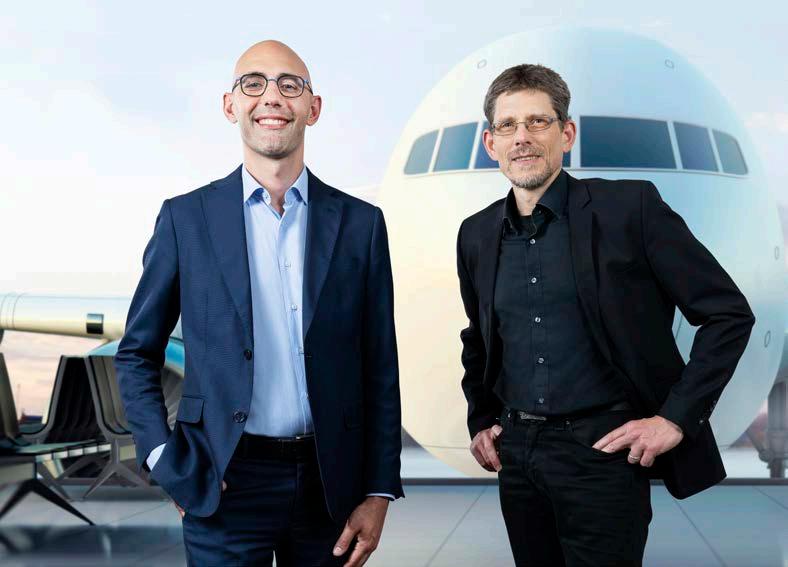
who filed a patent for the process nearly 100 years ago. In this process, carbon monoxide is hydrogenated with hydrogen at temperatures of 150 to 350 degrees Celsius on the surface of catalysts containing cobalt or iron, which regulate the chemical reactions. The process is well established and is used today on a large industrial scale.
“Kerosene, however, is particularly challenging,” says PSI chemical engineer Jörg Roth, project coordinator for SynFuel. This very energy-rich fuel consists of a special combination of light and heavy hydrocarbons. It’s this combination that gives kerosene the specific viscosity, boiling point, flash point, and other parameters that must be maintained to ensure the necessary level of safety in an aircraft. But the Fischer-Tropsch process produces a wild mixture containing many types of hydrocarbons that are not wanted in kerosene. “In order to obtain high-quality kerosene, the product has to be treated at great expense, with a corresponding loss of efficiency,” Roth acknowledges.
Methanol route is promising
PSI researchers are working on developing alternatives. One possibility is known as methanol synthesis. In this process, methanol is produced from carbon monoxide and hydrogen at high pressure using catalysts made of zinc oxide and copper. This too is a long-established process, but only recently has research revealed how longer-chain hydrocarbons such as ethylene (C₂H₄), propylene (C3 H₆), butylene (C₄H₈), and finally kerosene can be synthesised from methanol (CH 3OH) in a series of additional steps.
Reactor type, temperature, pressure, and the relative proportions of hydrogen and carbon oxides are just a few of the parameters that have to be tuned to each other to accomplish this. “But the critical thing is the choice of catalyst,” says ESI head Ranocchiari. A catalyst is a material that promotes certain chemical reactions; some reactions are not possible without the catalyst. In the present instance, the catalyst controls the increasing length of the hydrocarbon chains. The size of the pores on its surface determines which molecular chains are formed. The right catalyst therefore ensures that there are fewer unwanted by-products. Above all, it stops the reactions at a specific point. “Otherwise, the carbon chains would become endless, and we’d just end up with wax,” Jörg Roth explains.
The insights gained on the ESI Platform are also the basis for a promising industrial collaboration that started at the beginning of last year: “We were approached by the Swiss start-up Metafuels,” says Ranocchiari says. The company believes that there is a huge market for SAF, and it already had a business plan and had secured powerful investors in the green technology sector. What it still lacked, however, was proof that SAF could be produced more efficiently than in conventional Fischer-Tropsch plants. Only then would production be economically viable.
Catalyst ensures the right mix
Together, the project partners tested different ideas and eventually found a functional configuration, including an effective catalyst. In the laboratory, the synthesis already works as intended. Now it’s time to scale up the process: the partners are currently
Marco Ranocchiari (left) and Jörg Roth would like to facilitate the industrial-scale production of SAF. As one of
steps, a pilot plant is currently being built on the PSI site.
assembling the components for a pilot plant, roughly the size of a house, slated to begin operation on the PSI site next year and produce 50 litres of SAF per day. The construction is being supported by the Swiss Federal Office of Energy (SFOE) with nine million Swiss francs. By 2028, Metafuels wants to build its first industrial-scale commercial plant with around a hundred times the capacity. “First of all, we need to use the pilot plant to find out how best to design production on such a large scale,” says Ranocchiari.
In any case, everyone involved hopes their newly developed technology, which they call aerobrew, will spur others to follow their lead and launch similar projects to achieve the ultimate goal of becoming climate neutral: “First and foremost, such transfer projects between research and industry can point the way,” says Thomas J. Schmidt, Head of the PSI Center for Energy and Environmental Sciences.
Correctly designed, SAF can reduce formation of particulates
Those involved believe that the chances of SAF helping achieve climate neutrality are very high. Not only could it reduce CO₂ emissions to a minimum without subjecting the entire aviation industry to a technical overhaul, it could also address the non-CO₂ effects of
flying, which are even more relevant for global warming. Synthetic kerosene can be designed in such a way that it reduces cloud formation during operation and thus also curbs global warming.
A new initiative called reFuel.ch has been set up to investigate by 2032 the extent to which this is reasonable and feasible. The project will focus on another important aspect besides the composition of SAF: “The starting materials such as methanol, carbon monoxide, and ethylene are essentially the same as those used in the chemical industry to produce all kinds of plastics as well as fine chemicals for medicines,” says Thomas J. Schmidt. Up to now the basis for this has mainly been natural gas, another fossil resource that is harmful to the climate. This versatility is one of the reasons why the SFOE has granted reFuel.ch 15 million Swiss francs in funding.
Demand for SAF
This illustration makes the scale of the task clear. The actual demand for SAF still far exceeds the amount of fuel being produced.
One factor remains, however: Even with further gains in efficiency, the production of SAF will require significantly more electricity than the production of conventional kerosene. This is mainly due to the energy-intensive production of hydrogen by electrolysis and energy losses during each production step – electrolysis, CO₂ extraction, and synthesis. As a result, today SAF remains four to seven times more expensive than conventional kerosene. “Ultimately, the investment cost of the new technologies we are currently developing is not the critical factor,” says Jörg Roth. “Rather, it’s the cost of the energy that will be used to operate them.” Calculations show that meeting the aviation industry’s current demand for kerosene synthetically would need at least three times as much solar and wind energy as was produced worldwide in 2021. The demand is huge. Accordingly, the whole idea of SAF as a kerosene substitute becomes all the more worthwhile, the cheaper it is to produce the energy needed. 600 million litres 325 billion litres = 1 billion litres

Mathematical modelling with AI
Romana Boiger is a mathematician who specialises in numerical modelling and artificial intelligence. She is carrying out research in these areas at the Laboratory for Waste Management, which supports the National Cooperative for the Disposal of Radioactive Waste (Nagra) in Switzerland’s programme for the disposal of radioactive waste. She is using laboratory data based on numerous drill cores to develop complex models for deducing the physical and chemical properties of rocks. These properties can be used to simulate the dispersion of gas, water and radionuclides. Her contribution thus supports the development and construction of a safe deep geological repository.
In the flying laboratory
Aeroradiometry can be used to detect radioactivity on the ground from the air. Every year, the National Emergency Operations Centre (NEOC), with the support of PSI, carries out measuring flights to determine the radiological situation in Switzerland.
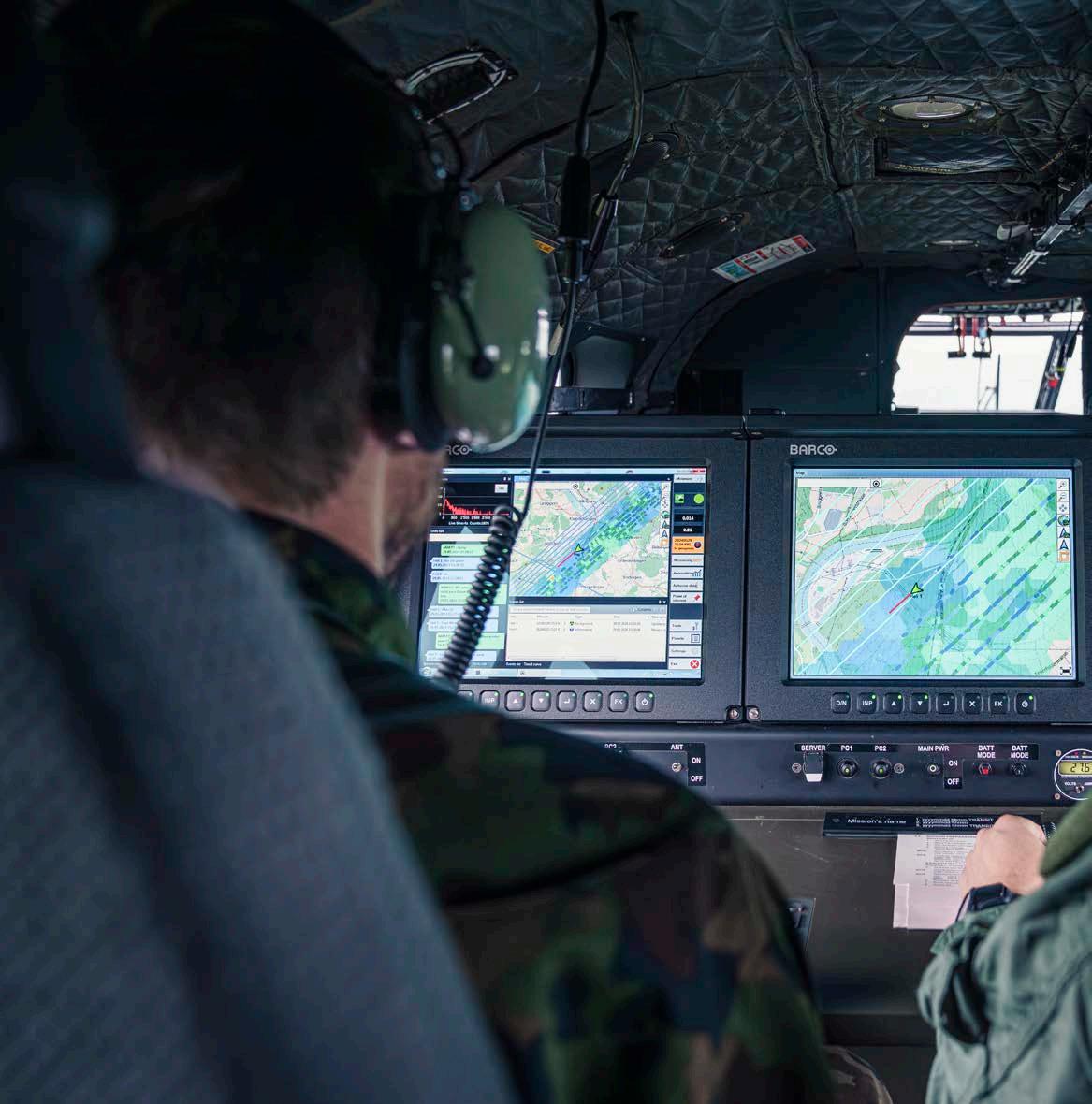

Text: Benjamin A. Senn
The helicopter’s rotor blades vibrate and lift the five-tonne behemoth into the air, seemingly without effort – the quiet roar and the distinctive smell inside the Super Puma could make you think you were inside a gigantic lawnmower. From the launch pad at Dübendorf airport, it races along at 100 kilometres per hour, high above the city of Zurich and along the Limmat towards the Wasserschloss, where the Limmat and Reuss rivers join the Aare. This is the actual area that is to be surveyed in order to determine the radiological situation of PSI, the Swiss interim storage facility for radioactive waste ZWILAG, and the two nuclear power plants in Leibstadt and Beznau.
To record the measured data as accurately as possible, the helicopter must be kept at a height of 90 metres – the cargo bay in its belly holds the measuring equipment used to detect the radioactivity of the earth’s surface. Maintaining a constant height above the ground is a challenge for both the pilots and the crew, because the ground level below is changing all the time, meaning that you feel every hillock in the landscape. And so the helicopter climbs steeply up the ridge of Villigen’s Geissberg – pressing the crew down into their seats – only to plunge just as steeply down the other side. It feels like riding a roller coaster – and you begin to understand why sick bags were handed out before take-off.
The helicopter follows precisely specified parallel paths. With a field of view that is 300 metres in diameter and a distance of 250 metres between adjacent paths, it’s possible to scan the entire ground. The route can also be followed live on the computer screens of the two operators in the helicopter. An initial evaluation takes place in real time in this flying laboratory. The coloured areas on the screen allow you to immediately identify the radiological background: blue and green correspond to about 40 to 100 nanosieverts per hour – a sievert is the physical unit for quantifying radiation exposure – everything’s in the green (or blue) range.
The operators can monitor the measurements directly from the helicopter. If necessary, they can instruct the pilots to fly over a specific spot again.
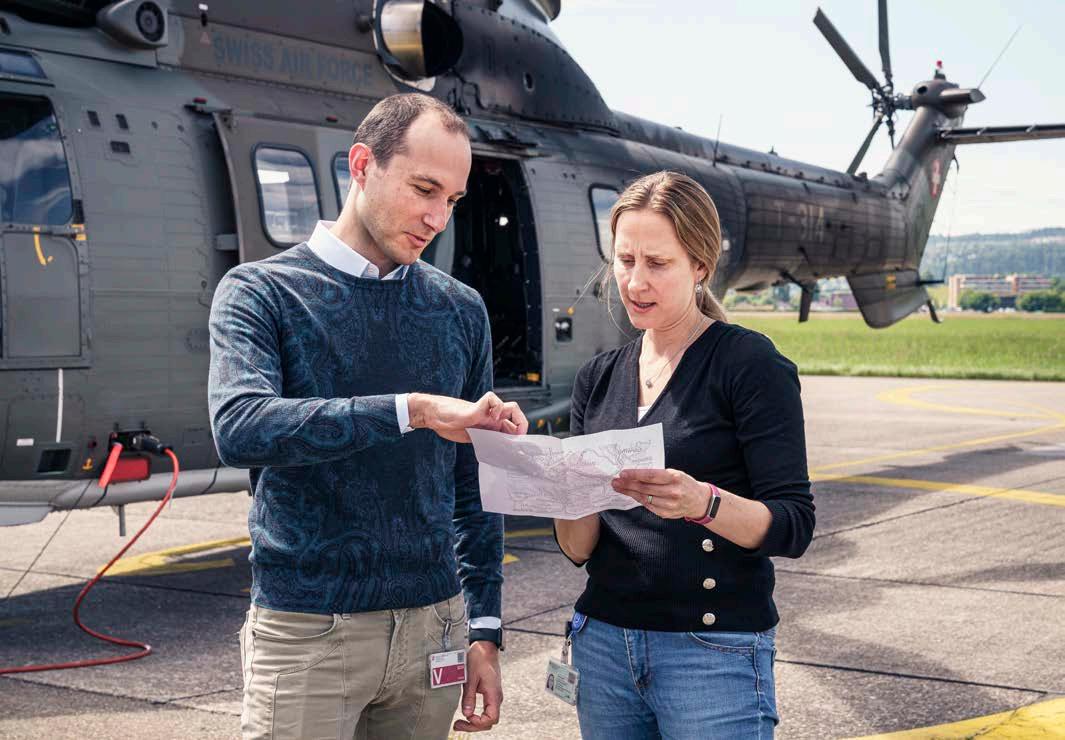
The problem with the rain
Three hours earlier, in an unostentatious conference room at the Dübendorf military airport: exercise leader Cristina Poretti presents today’s mission and shows the area to be surveyed, a map with parallel red lines drawn across it. The helicopter has to fly along these lines. “The weather looks bad, though. We’re expecting a rain front from the east towards evening.” Poretti, who is from Ticino, points to the tiny numbers from one to four above the red lines. “I’ve divided the area into four different priority zones: We should be able to manage Zones 1 and 2 today. We may have to postpone Zones 3 and 4 until the next measurement date.”
The flying laboratory can measure an area of around 100 square kilometres within three hours without a stopover.
Her audience listens attentively: uniformed professional soldiers, militia members, civilian NEOC officials, and PSI physicist Alberto Stabilini. “Any comments from the pilots?” No comments. Cristina Poretti is in charge of the exercise – in her mind she goes through the process once again. In the event of a radiological emergency, she would be responsible for ensuring that everything runs smoothly.
Cristina Poretti, Head of Aeroradiometry at the NEOC, and PSI physicist Alberto Stabilini briefly discuss the measurement route one last time before take-off.
That means: planning the mission, cooperating with partners such as the military and the cantons, localising the affected area, and planning and prioritising further measurements on the ground. All this would be handled by her department, which is why the annual measuring flights also serve as a training opportunity.
The Swiss Army provides the pilots and loadmasters, as well as the infrastructure at the Dübendorf military airport. The operators are military personnel with special training doing an extended term of service – militia members who are subordinate to the NEOC at the organisational level. “These people usually have a scientific background and act as specialists during the flight. Since everything takes place in real time, they can intervene directly in the measurement process and, if necessary, instruct the pilots, for example, to fly vertically over a certain point again.”
And what does the rain have to do with this? “The rain washes radon by-products out of the air,” explains Alberto Stabilini. Radon is a natural, radioactive noble gas that forms in the ground as part of the uranium decay chain. If radon gas enters the atmosphere, it decays further, forming bismuth and lead, among other elements. These so-called radon decay products are also radioactive and are suspended in the air. When it rains, they are washed out of the air and collect on the ground. “When analysing the readings, this leads to an overestimation of the uranium activity concentration in the ground.”
Rapid and extensive
In 1975, Swiss aeroradiometry was still purely military in nature, and the procedure was for a soldier to lean out of a helicopter with a Geiger counter to detect the radiation below. In 1986, the Swiss Geophysical Commission used the method for the first time, in a project to map the central massifs of the Aar and Gotthard. An algorithm for evaluating such data was then developed as part of two dissertations at ETH Zurich. From 1994 on, the NEOC took over the management of the project. For the first time, aeroradiometry was carried out aboard one of the Swiss Army’s Super Puma helicopters, which can be used for missions in difficult weather conditions and at night.
In 2003, the scientific expertise was transferred from ETH Zurich to PSI, in cooperation with ENSI. The new measuring system was finally put into operation in 2018. Since then, four highly sensitive detectors with associated electronics and software have been available at two locations in Switzerland. Such a system can be installed in the Super Puma within a few hours. All data from the helicopter, such as GPS, altitude, and speed, are included in the analysis. In effect,
the helicopter merges with the detector to become a single measuring device; thanks to the simultaneous evaluation of the data, it also serves as a laboratory.
This makes it possible to measure an area of up to 100 square kilometres within three hours without a stopover and to determine the radiological situation of this area in real time. Together with a dense network of permanent measuring probes on the ground throughout Switzerland, as well as other measuring teams and vehicles, aeroradiometry makes an important contribution to civil defence.
Teasing out the details
During the flight, Alberto Stabilini remains on the ground, working in the background on his laptop. It’s his job to intervene if a measurement result is unclear and his expert opinion is sought. “At 90 metres above the ground, only a small amount of radiation reaches the detector,” the physicist explains. “So in some cases it may not be possible to assign a signal clearly to a source.”
For the NEOC, the data analysis must be instantaneous, since it is ultimately the basis for deciding whether a radiological source poses a threat to the population and if so, what steps need to be taken next. “The system is perfectly adequate for this” says Stabilini. “Still, sometimes you need to take a closer look.”
If the operators are unable to assign a specific anomaly to a source using their onboard computers, or if they need a second opinion, they send the data set to Stabilini, who checks it using special software. “This code was developed by my predecessor Gernot Butterweck,” Stabilini explains. “It combines his more than 25 years of experience with field measurements. Speed, altitude, radiation geometry, and also the terrain can influence the signal – with this software we manage to tease out the maximum amount of information from the raw data.”
Today’s flight, though, was free of inconsistencies. In three hours, the team has managed to map 115 square kilometres. “A successful day’s work,” says Stabilini happily.
Latest PSI research news
1 Bionanomachine for green chemistry
Researchers at PSI have for the first time precisely characterised the enzyme styrene-oxide isomerase, which can be used to produce valuable chemicals and drug precursors in an environmentally friendly manner. Together with two other enzymes, styrene-oxide isomerase enables certain environmental bacteria to decompose the hydrocarbon styrene. Styrene-oxide isomerase catalyses a very specific step in this reaction: it cleaves a three-atom ring in the styrene oxide, consisting of one oxygen and two carbon atoms, a so-called epoxide. In doing so, the enzyme always produces a single product. The enzyme is also capable of acting on a number of additional substances, making important precursors for medical applications. With the help of this enzyme, industry could produce precursors for drugs and important chemicals by energy-saving and environmentally friendly means. The enzyme could potentially be modified to act on a wide range of new substances. In addition, the enzyme is very stable and can therefore be used on a large scale. This could make it an important new tool for the circular economy and for green chemistry.
Further information:
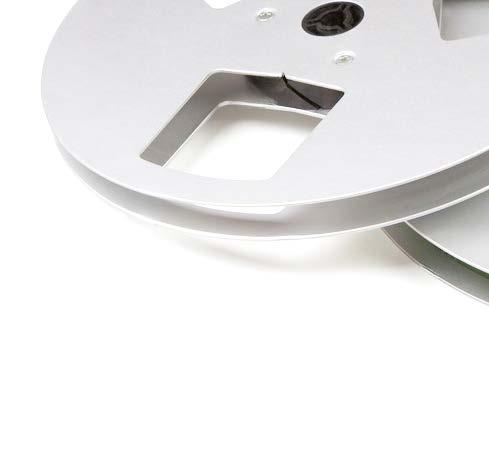
2 Bringing together medical applications and research
Advances in medical research and innovation can benefit from a close collaboration between physicians and researchers. To facilitate this, the Canton Hospital of Aarau AG, the Canton Hospital of Baden AG, the Hirslanden Clinic of Aarau AG, ETH Zurich, Empa and PSI jointly set up the “Association for Medical Research and Innovation in the Canton of Aargau” on 3 June 2024. In the future, doctors who primarily work in a clinical capacity at hospitals in Aargau, will be able to apply for research time through this association. During this research time, they will work on joint projects with researchers at ETH Zurich, Empa, or the PSI. The association will make payments to the hospitals to compensate them for the time that doctors are devoting to research. The association, in turn, is to receive one million Swiss francs in one-off start-up funding for the first five years from the participating institutions and hospitals (50%) as well as from the canton of Aargau (50%).
Further information:
https://bit.ly/3YIV7Qw
https://bit.ly/40ls5aZ
3 Park Innovaare is now open
After four years of construction, a modern innovation park with 23,000 square metres of clean rooms, laboratories, precision workshops, offices, and meeting rooms has been built next to the PSI. The facility was officially opened at the end of April. Already, 80 percent of the building has been rented out. PSI is both a strategic partner and the largest tenant. The unique access to research infrastructures, large research facilities, and PSI’s knowhow puts the companies at Park Innovaare in close contact with important technologies and gives them a corresponding head start. This further strengthens Switzerland’s already high level of competitiveness. Park Innovaare focuses on four areas: photonics and quantum technologies, life sciences, advanced manufacturing and semiconductor technologies, and energy and sustainability.
Further information:
https://bit.ly/4froiNF
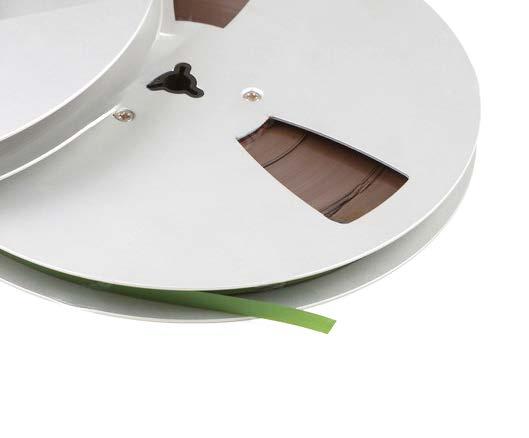
34 years later, the new technique is meant to revive the lost song “Face It Alone” by Queen .
0.001 millimetre – the approximate diameter of magnetisable particles that store information on audio tapes.
48 minutes of live music by B.B. King are to be rescued from a decaying magnetic tape.
4 Music rescued by X-rays
PSI researchers are developing a technique that uses special synchrotron X-rays from the Swiss Light Source SLS to non-destructively digitise high-quality historic audio tapes. Audio tapes store information in a layer of tiny magnetic particles – like tiny compass needles pointing either north or south. When sound is recorded on the tape, the magnetic orientation of these particles is changed – the tape becomes magnetised and the audio information is now physically stored in the magnetisation pattern. To play back this pattern, the tape is moved past a playback head. Since the magnetic field is constantly changing due to the pattern, a voltage is induced in the playback head, which generates an electrical signal. This signal is then amplified and converted into an acoustic signal. In their X-ray-based technique, the researchers are not looking at the magnetic field but rather at the individual magnetic particles that create it. The magnetisation of these tiny particles can be read out virtually one by one using the X-rays produced by SLS, and this information can be converted into a high-quality audio signal.
Further information: https://bit.ly/3Cectf7

Favourite books at PSI
We asked our colleagues at PSI what their favourite books were. In this Gallery, we’d like to present five books selected from the many answers we received.
Text: Christian Heid


Brothers
Federica Marone is a beamline scientist at TOMCAT at the Swiss Light Source SLS. At TOMCAT, tomographic techniques allow the non-destructive imaging of the microstructure of samples from a wide range of research fields, including biomedicine, materials science, geosciences, and palaeontology.
Federica Marone’s favourite book is one of the great novels of world literature, The Brothers Karamazov. In this epic family chronicle, Dostoyevsky delves into the depths of the human soul. Federica: “I was completely amazed by the contemporary relevance of this drama, which is almost 150 years old. Ethical questions about faith, doubt, morality, and free will are discussed with great passion.”


Galaxy
Andreas Spitaller works as an IT expert at the service desk and helps PSI colleagues find solutions when they get stuck on computer-related issues.
His favourite book, The Hitchhiker’s Guide to the Galaxy, was published in the late 1970s. This cult novel by Douglas Adams offers nothing less than the answer to the meaning of life! And why do you like this book so much, Andreas? “I love the book because it uses humorous turns of phrase like the following, which are a brilliant reminder of the value of friendship and solidarity, and help you forget the sometimes gloomier aspects of everyday life: ‘Two heads are better than one. You have twice as much fun.’”
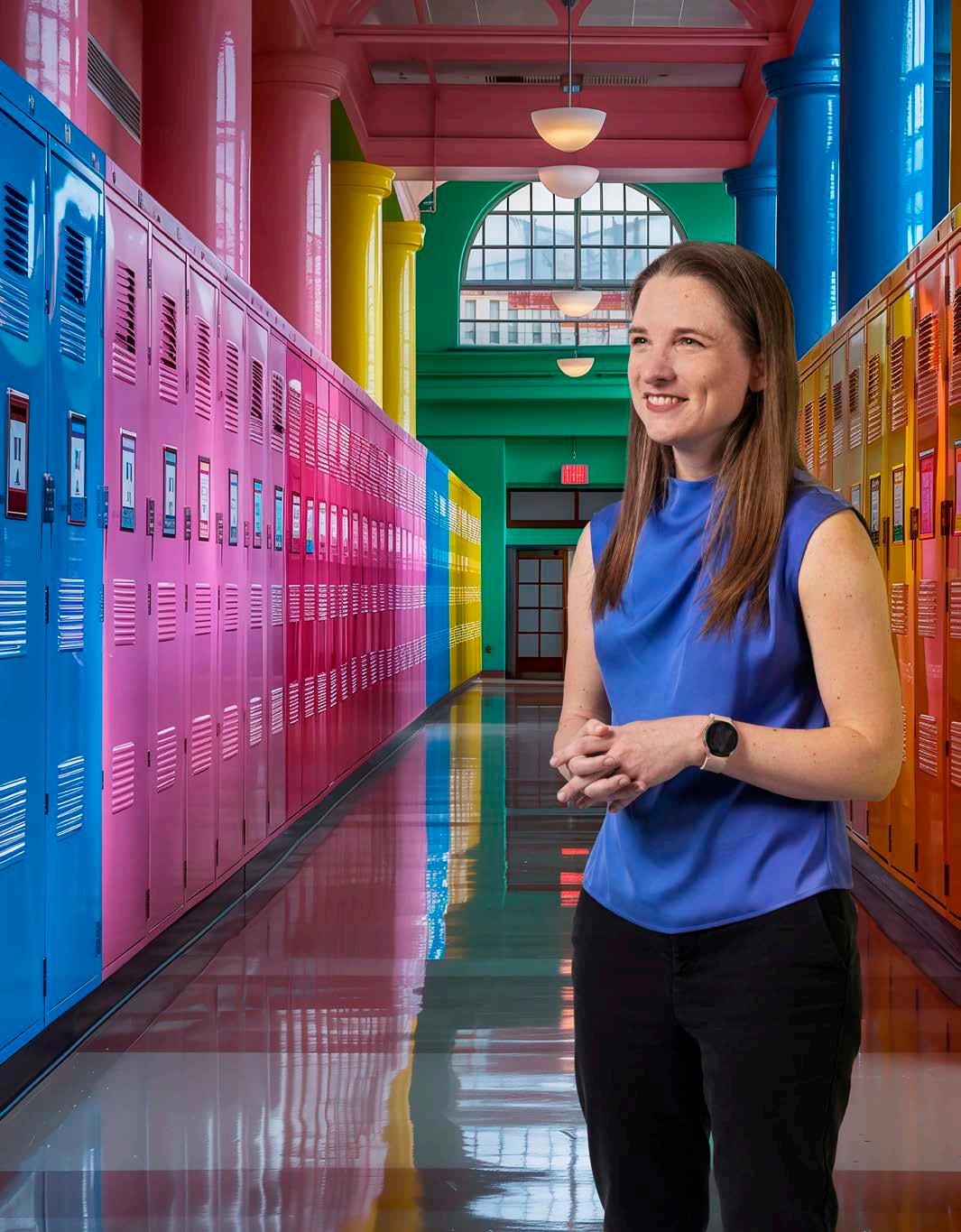

Girl
Shawn Bell is the assistant for the SLS 2.0 upgrade project. The Swiss Light Source SLS will go back online in 2025 with an improved performance, in many cases by a factor of up to 40.
Shawn Bell discovered her new favourite book last winter: Joya Goffney’s Confessions of an Alleged Good Girl, which was published last year. In this coming-of-age confessional, the daughter of a minister in a small Texas town discovers love, sexuality, and her independence. Shawn: “This book made me feel seen and showed me that I wasn’t the only person who had to sort through the destructive effects of purity culture. This kind of story didn’t exist when I was the main character’s age, but I’m glad it exists now – for anyone going through a similar situation.”


Pillar of Blood
Ute D. Mayer is an assistant in the Center for Nuclear Engineering and Sciences at PSI, Switzerland’s nuclear competence centre.
One of Ute’s favourite books is The Pillar of Blood from 1955. The book deals with the persecution and murder of European Jews in the 1930s and 40s and explores questions of guilt, meaning, and justice. The author, Soma Morgenstern, uses the cadences of biblical language to great effect. Ute: “Morgenstern imbues the German language with a variety and clarity that I had never encountered before, and which absolutely thrilled me. For me, the noble and graceful language of the book make it stand out: a truly exceptional work!”


Captains
Vitor Barrote works as a chemist at the Hot Laboratory research facility, the only lab in Switzerland approved to handle large quantities of radioactive materials, including commercial and experimental nuclear fuels.
One of his favourite books is the sixth novel by the successful Brazilian author Jorge Amado: Captains of the Sands . This sociocultural study describes the world of homeless adolescents in Salvador da Bahia who have joined together to form a gang. Vitor: “In all of his books, Jorge Amado writes about the same main character: the Brazilian people. And like the life of the Brazilian people, this book is full of beauty and a little sadness.”
A particle physicist in the classroom
Muon decay may not be part of the regular Swiss high school curriculum, but Giada Rutar, who studied this type of decay while working on her PhD at PSI, brings a great deal to her teaching job from her experience in research – at the very least, a tremendous enthusiasm for physics.
Text: Benjamin A. Senn
The Musegg Wall with its iconic towers is one of the landmarks of the city of Lucerne. From here you can view the entire city and look out over deep blue Lake Lucerne, with the mountain panorama stretching out in the background – including the local Mount Pilatus and Mount Rigi, the Queen of the Mountains. This picturesque setting below the Schirmer Tower is where Giada Rutar works, teaching physics and computer science at the Musegg Cantonal School.
Meeting Giada Rutar for the first time, you can tell right away that she’s a real fan of physics. Her enthusiasm is contagious, as she explains that what you are seeing between the shadows cast by the leaves of a tree is not diffuse sunlight falling on the ground, but actually tiny images of the sun itself – everywhere. “It works like a pinhole camera,” says the 33-yearold. Still, it was by no means clear from the start that she would end up as a teacher and make a career of communicating this enthusiasm. What she did know was that she wanted to work in physics, to study and understand such phenomena. So it was only natural for Rutar to pursue a PhD after completing her undergraduate degree in physics – which is how she came to PSI in 2013.
She found her field of research at the Centre for Neutron and Muon Sciences. Together with her mentor Angela Papa, herself a particle physicist at PSI, Rutar went in search of rare muon decays. Muons are exotic elementary particles that are very short-lived and decay into more stable particles almost immediately after they are created. However, the paths by which they decay can be very different.
Rutar worked on a very special decay mode that so far exists only in theory. “Our experiment aimed to detect so-called MEG decay.” MEG stands for muon-electron-gamma, that is, the decay of a muon into an electron and a photon, the latter of which particle physicists refer to using the Greek letter gamma. “This decay path is like the Holy Grail of particle physics – its discovery would reveal a whole new world of
physics beyond the Standard Model.” But if it does exist, MEG decay would be extremely rare. “The odds of discovering it would be less than one in 3.2 trillion, making it around 650,000 times less likely than winning the Swiss lottery.”
PSI is home to the world’s most powerful muon facility, where it’s possible to observe roughly 30 million muon decays per second: perfect conditions to search for such a rare decay. However, the high decay rate requires correspondingly fast detectors – which were not available off-the-shelf, and Rutar’s PhD research helped to advance their development. In addition, the experiments had to be calibrated, and enormous mountains of data had to be analysed using the appropriate software. “It was all tremendously exciting and varied work.”
So why did she decide not to pursue her academic career further? “It was simply time for something new – and I felt that teaching was a meaningful profession.” So straight after completing her PhD, Rutar began working on her teaching diploma at ETH Zurich and set out as a teacher. “I was thrilled to be trying something new. At the same time, I also felt a bit melancholy – I really enjoyed working at PSI, and I had a terrific group of colleagues.” Rutar recalls: “On my last day, there was actually a rainbow over PSI –completely cheesy, like a scene in a Bollywood film,” she adds with a smile.
Communicating the joy of physics
The experiments they do at the Musegg high school are a little easier to digest than those at PSI; no complex large research facilities, fewer tangled cables, and no confusing data sets that have to be combed for specific peaks. “With us, it’s all about grasping the physics with our own senses and searching independently for explanations,” says Rutar. A small collection of experiments helps the teacher to make the various phenomena tangible.

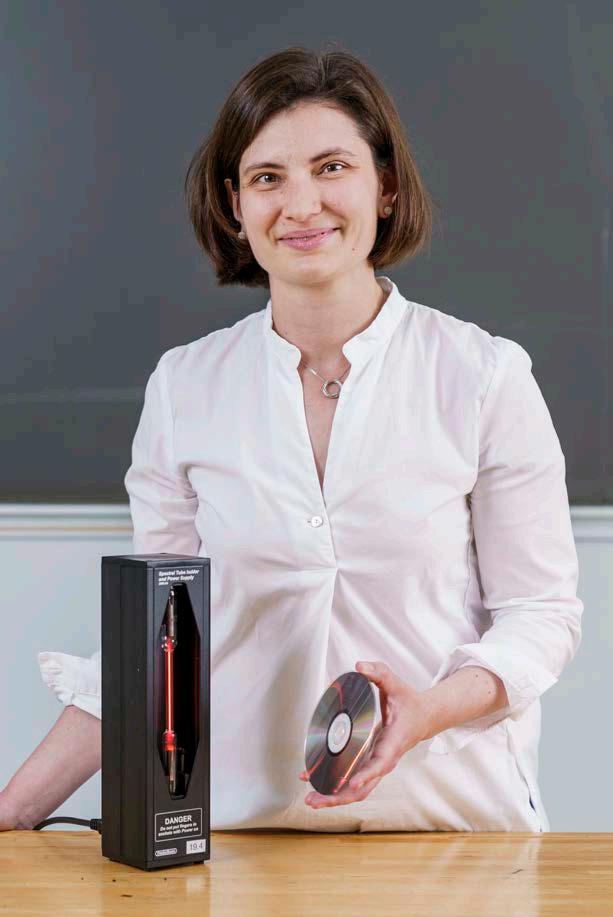

“ I want to convey the joy of physics and show that women, too, can be successful in this field.”
Giada Rutar, physics and computer science teacher at the Musegg Cantonal School
In a “bring your own device” class, where students use their own personal laptops or tablets, one device in particular stands out: an old tube television set. “We may have grown up with them, but to most of my students today they probably look like something out of a museum,” the teacher laughs. “But it’s a great way to demonstrate the deflection of electrons by a magnetic field.”
The screen of a cathode ray tube television set is made up of small phosphorescent dots that light up when electrons hit them. To produce a colour image, three different electron beams are used for the primary colours red, green, and blue. These three beams are simultaneously directed at the respective dots, whereby each beam lights up its corresponding colour. By combining the three colours, the desired spectrum can be displayed.
Giada Rutar takes a magnet and holds it up to the screen. The original image immediately becomes blurred and the colours are deflected, creating a psychedelic pattern. “Because the electrons are negatively charged, they are deflected by the magnet and end up in the wrong place on the screen – this is what produces these patches of colour in the image. Magnets are also used at SLS at PSI to guide the electrons along their circular path.”
But even a simple CD, now also a museum piece from bygone digital days, can make physics visible. Everyone is probably familiar with the colourful rainbow pattern produced by the lower side of commercial CDs. “Here, white sunlight is being split into its spectral colours,” explains Rutar. However, the effect can also be demonstrated with sources other than sunlight: “For example, every element emits a characteristic spectrum when heated.”
This elemental fingerprint can be used to deduce the chemical composition of a substance. “We can also use this to determine which elements stars contain.” Rutar demonstrates the effect using a neon lamp. “Here, too, we see a kind of rainbow – except that this one is composed of orange-reddish colours – which are characteristic of the element neon.”
Class trip to PSI
Giada Rutar has been a high school teacher at the Musegg Cantonal School for seven years now. Having been born in Lucerne, this was something of a homecoming. “I also completed my secondary education here in Lucerne – though not at Musegg but at the Alpenquai Cantonal School, on the other side of the lake.”
Withdrawing from research meant not only coming home, but also achieving a new work-life balance and suddenly having more time for herself.
“I love research and I was passionate about my work,” says Rutar. “But the reality is that science is very high demanding – you have to be totally committed and sometimes push yourself beyond your limits if you want to be successful. On top of that, you have to be very mobile, and the chances of landing a permanent position are slim – all of which was not compatible with my plans for my life.”
As a teacher, she no longer faces these drawbacks. Now, she finally has time for hobbies. Rutar plays the recorder in an ensemble – not just the instrument you might know from school music lessons, but one that comes in different sizes, tuned to all sorts of exotic pitches: “From soprano to bass – there are four of us, and we play Early Music.” In December 2023, she gave birth to her first child. “Here too, I’m grateful for the flexibility I have as a teacher; it allows me to combine my family and my career very well,” says the young mother proudly. Incidentally, she met her husband at PSI; he too was working on the MEG experiment at the time.
In spite of the distance from Villigen, Rutar still keeps in touch with her old workplace. At least once a year, she organises a day trip with one of her classes: the PSI Visitor Centre, iLab student laboratory, and the large research facilities – all-inclusive. “That can be very inspiring,” says Rutar. “One of my students discovered her passion for the subject during a visit to the Centre for Proton Therapy, and now she’s studying physics – with the aim of becoming a medical physicist.”
This, too, is one of the things that motivates Rutar about her profession: inspiring and exciting young people – especially young women, who are still a minority in the field to this day. “I want to convey the joy of physics and show that women, too, can be successful in this field.”

Speed limit for dolphins
One of the laws of physics states that if a fluid is moving rapidly, its static pressure drops. If this pressure falls below the vapour pressure of the gases dissolved in the liquid, tiny vapour-filled bubbles form. If the fluid flow carries these bubbles back into a region of higher static pressure, they implode. This can lead to massive shock waves which can be extremely destructive. Dolphins feel this effect when they swim too fast. If they move their flukes too rapidly up and down through the water, a phenomenon known as cavitation can occur, causing painful tissue damage. Researchers have calculated that, as a result, the maximum speed dolphins can travel near the surface of the water is 54 kilometres per hour. Fish can swim faster because they generally don’t have any nerves in their tail fins. So these scaly fellows feel nothing there. The tail fins of tuna, for example, sometimes display cavitation damage similar to that found on ships’ propellers and turbines.
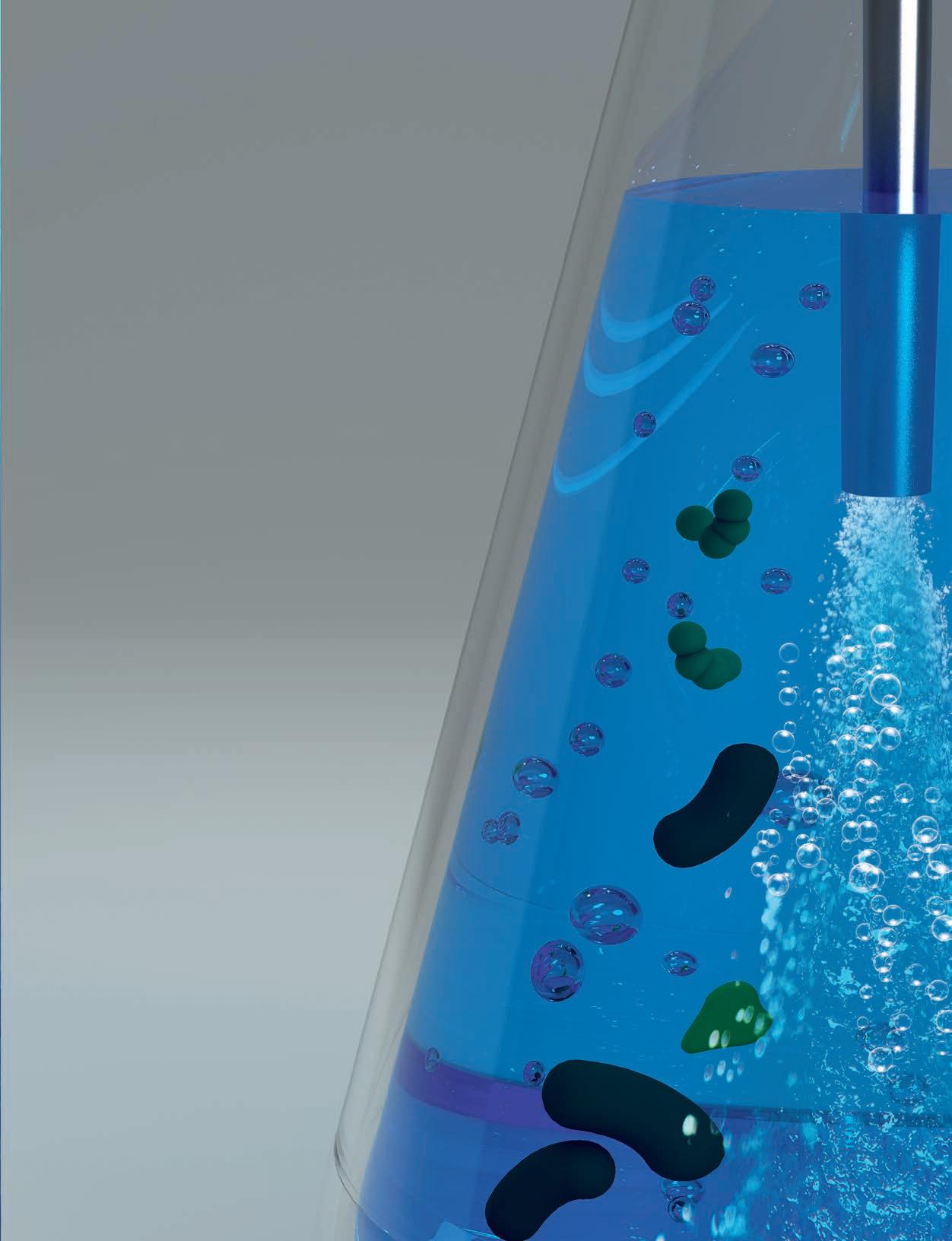
Carefully cracking cells
Researchers at PSI are using the phenomenon of cavitation to gently crack open cells. A crucial problem arises when trying to get at the components inside a biological cell: on the one hand, you want to break open the outer protective layer – the cell wall or cell membrane. On the other hand, you don’t want to damage whatever is inside: specific molecules, larger structures made up of many molecules, or even entire subunits known as organelles. The latter include mitochondria, the power plants of the cell; chloroplasts, the sites where photosynthesis occurs in green plants; and flagella, the propulsion systems of single-celled organisms. A proven method of getting at these cellular components is to use probes that send ultrasound into liquids. The sound waves cause the liquid to move rapidly, leading to cavitation. The resulting mechanical forces then crack open the cells as required.
From our base in Aargau we conduct research for Switzerland as part of a global collaboration.

5232 is Switzerland’s prime address for experiments on large research facilities. The Paul Scherrer Institute PSI even has its own postcode, a distinction that seems justified for an institute that extends over 342,000 square metres, has its own bridge across the River Aare, and has around 2,300 employees – more people than in most of the surrounding villages.
PSI is situated on both banks of the River Aare in the canton of Aargau, in the municipal areas of Villigen and Würenlingen. Its main areas of research are in the natural sciences and engineering. Funded by the federal government, it belongs to the domain of the Swiss Federal Institute of Technology (ETH Domain), which also includes ETH Zurich, ETH Lausanne (EPFL),

and the research institutes Eawag (Swiss Federal Institute of Aquatic Science and Technology), Empa (Swiss Federal Laboratories for Materials Science and Technology) and WSL (Swiss Federal Institute for Forest, Snow, and Landscape Research). We conduct basic and applied research and thus work on sustainable solutions for central questions from society, science and business.
Complex large research facilities
Switzerland’s federal government has given PSI the mandate to develop, build, and operate large, complex research facilities. These are the only such facilities within Switzerland, and some are the only ones in the world.
Running experiments at our large research facilities enables many scientists from the most diverse disciplines to gain fundamental insights for their work. The construction and operation of these kinds of facilities involve so much time, effort, and cost that comparable measurement equipment is not available to academic and industrial research groups at their own institutions. That is why we keep our facilities open to all researchers worldwide.
Paul
To obtain a time slot to use the experimental stations, however, both Swiss and foreign scientists first have to apply to PSI. Selection committees comprising experts from all over the world assess the scientific quality of these applications and recommend to PSI which candidates should be given measurement time. Even though there are around 40 measuring stations where experiments can be carried out at the same time, there is never enough capacity for all of the proposals submitted – around one-half to two thirds have to be rejected.
Around 1,900 experiments are performed every year at PSI’s large research facilities. Time slots are free of charge for all researchers working in academia. In a special process, users from private industry can buy time to carry out proprietary research and use the PSI facilities for their own applied research. For this, PSI offers special research and development services.
PSI operates five large research facilities in total where the internal processes of materials, biomolecules, and technical devices can be explored. Here scientists use different beams to “illuminate” the samples they want to investigate in their experiments. The beams available for this
Scherrer Institute 5232 Villigen PSI, Switzerland
Basel
Zürich
Bellinzona
Bern
Genf
800 scientific articles a year based on the experiments performed at PSI’s large research facilities
3,000 scientists from across the globe perform experiments at our large research facilities every year
5
large research facilities that are unique in Switzerland
range from particles (neutrons or muons) to intense X-ray light from a synchrotron or X-ray laser source. The different types of beams allow a wide variety of material properties to be studied at PSI. The high complexity and cost of the facilities is due to the massive size of the accelerators needed to generate the different beams.
Four main areas of research
However, PSI not only acts as a service provider for researchers, but also carries out an ambitious research programme of its own. The findings produced by PSI scientists help us to understand the world better, and also lay the foundation for developing new types of equipment and medical treatments.
At the same time, our own research is an important prerequisite for the success of our user service programme for the large research facilities. Only researchers personally involved in current scientific developments in the fields external researchers are working in can support them in their investigations and further refine the facilities to ensure they continue to meet the needs of cutting-edge research in the future.
Our own research is concentrated on four focus areas. In the area of Future Technologies, we investigate the diverse
properties of materials. With the knowledge this yields, we create the foundations for new applications – whether in medicine, information technology, energy production and storage, or new industrial production methods.
The goal of our work in the focus area Energy and Climate is developing new technologies for a sustainable and safe energy supply, as well as for a clean environment. Also in this area, we are investigating interconnections within Earth’s climate system.
In the focus area Health Innovation, researchers are looking for the causes of diseases as well as for potential therapeutic methods. In addition, we operate the only facility in Switzerland using protons for the treatment of specific cancer diseases. This special technique makes it possible to destroy tumours in a targeted way while leaving the surrounding health tissue largely undamaged.
In the area Fundamentals of Nature, researchers are seeking answers to fundamental questions about the basic structures of matter and the functional principles of nature. They investigate the structure and properties of elementary particles – the smallest building blocks of matter – or clarify fundamental processes in living organisms. The knowledge gained in this way opens up new approaches to solutions in science, medicine and technology.
The brains behind the machines
The work at PSI’s large research facilities is challenging. Our researchers, engineers, and professionals are highly specialised experts. It is important for us to foster this expertise. So we want our employees to pass on their knowledge to the next generation, who will then put it to use in a variety of professional positions, not just at PSI. Around a quarter of our staff are therefore apprentices, doctoral students, or postdocs.
Publishing details
5232 – The Magazine of the Paul Scherrer Institute PSI is published twice a year. Issue 2/2024 (September 2024) ISSN 2674-1261
Publisher Paul Scherrer Institute Forschungsstrasse 111 5232 Villigen PSI www.psi.ch
Editorial team
Monika Gimmel, Martina Gröschl, Christian Heid, Sebastian Jutzi (Ltg.), Benjamin A. Senn, Dr. Mirjam van Daalen
Translation Patrick Regan
Editor Daniel Bullinger
Design concept Scholtysik & Partner AG and Studio HübnerBraun
Design, Art Direction and Layout Studio HübnerBraun
Photos Paul Scherrer Institute PSI / Markus Fischer and Mahir Dzambegovic except: Page 14: Flughafen Zürich.
AI image generation
Cover, pages 3, 6, 7, 9, 10, 13: Adobe Stock (KI); Pages 26 – 31: Midjourney by Studio HübnerBraun.
Illustrations and graphics
Studio HübnerBraun, except: pages 37, 37: Daniela Leitner.
Discover more about PSI at: www.psi.ch
5232 is available on the Internet. Subscription to the magazine is free. You can subscribe here www.psi.ch/en/5232
5232 is also available in French and German www.psi.ch/fr/5232 www.psi.ch/de/5232

Coming up in the next issue
No matter what goal we are trying to achieve, doing so often calls for innovative technologies, processes, and materials. Research and development of advanced production methods that provide the necessary tools is therefore crucial. In this area, known as advanced manufacturing, we at PSI are working closely with international researchers to develop solutions to the many different challenges facing Switzerland and other countries around the world. In this issue, we present some of the most exciting advances: from 3D printing and semiconductor manufacturing to the development of new materials, smart glass, and sensitive skin for robots.

Paul
